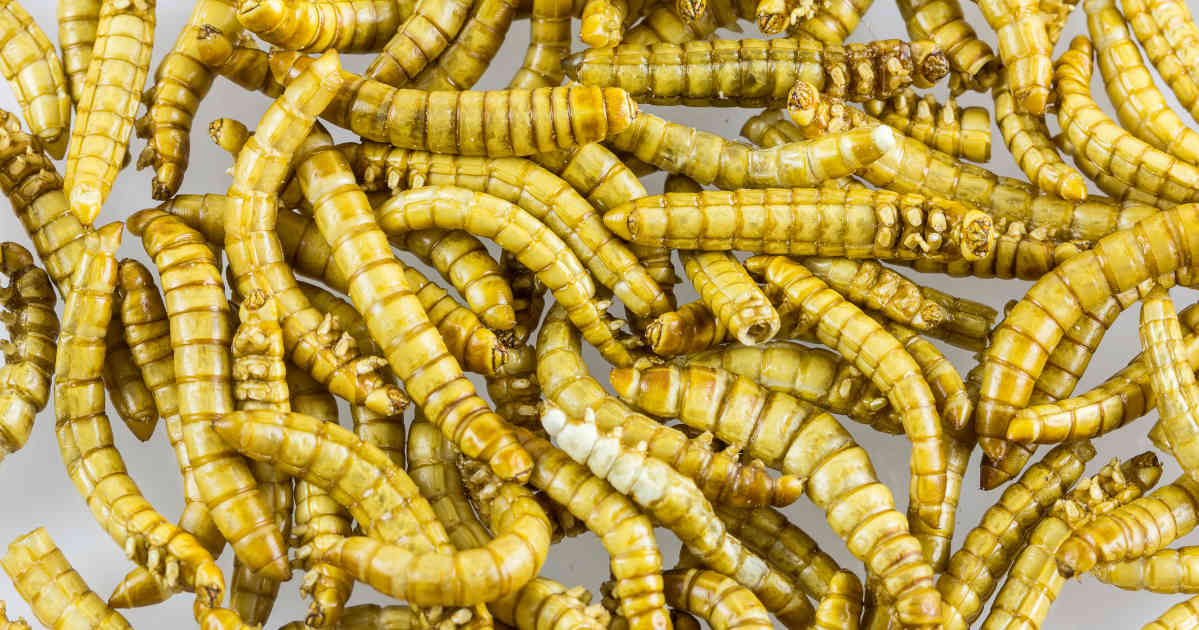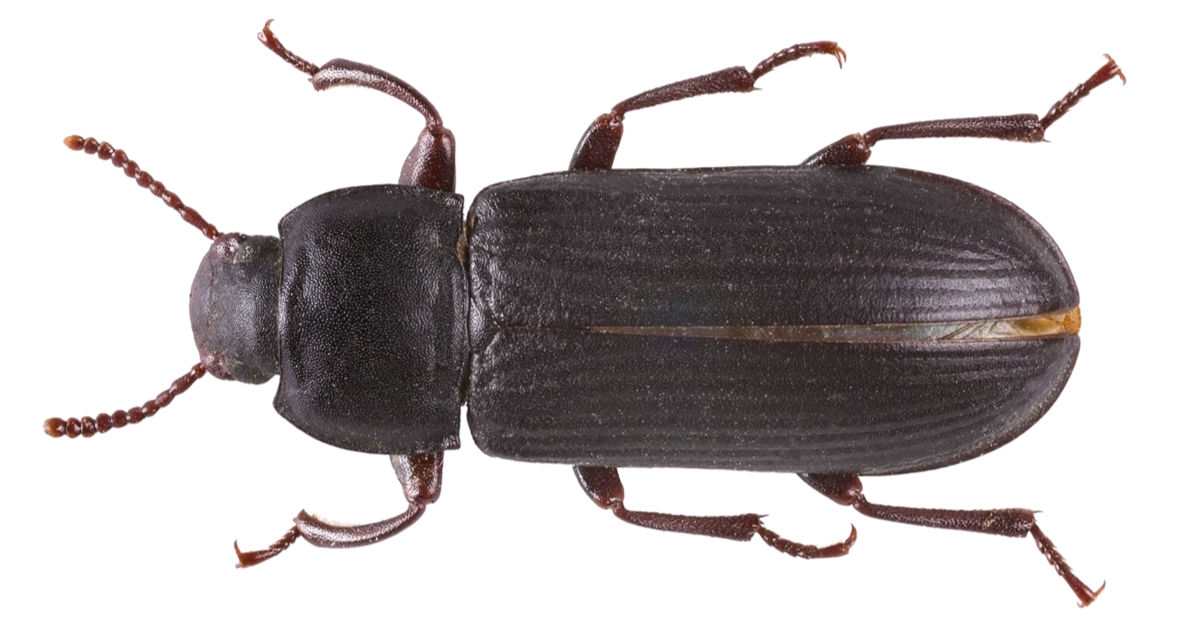Can Bearded Dragons Eat Mealworms?
Can bearded dragons eat mealworms? Are mealworms for bearded dragons OK? Bearded dragons can eat mealworms regularly as part of a balanced diet. They shouldn’t be fed just mealworms though.

Last Updated: January 10th, 2022
By: Steve
Table of Contents
Can bearded dragons eat mealworms? Are mealworms for bearded dragons OK? Bearded dragons can eat mealworms regularly as part of a balanced diet. They shouldn’t be fed just mealworms though. Be cautious if feeding mealworms to babies though as their shell can be hard to digest.
What Are Mealworms For Bearded Dragons?

Mealworms are the larvae of the mealworm beetle. The mealworm beetle is a dark, long bodied beetle. The mealworm larvae is approx. 2.5cm long and are an orange colour. Mealworms in the wild are considered to be a pest because they infest stored grains.
Mealworms however are a good food for many reptiles and birds and are even used as human food in some places, particularly Asian countries. We’re told they’re quite nutritious but we’re not sure we’d be too happy about eating them ourselves!
Can Bearded Dragons Eat Mealworms?
Mealworms can be fed to bearded dragons on a reasonably regular basis. They shouldn’t be the only bug that are fed to your dragon as they’re not nutritionally that fabulous (but they are OK). They also have a hard outer shell which is harder for the dragon to digest.
There is lots of debate (and little evidence) around whether to feed mealworms to baby bearded dragons. Lots of people suggest they should not be fed to babies, whereas many others say they’re fine. It’s our opinion that mealworms are fine for baby bearded dragons in moderation, so long as your temperatures are up to scratch.
Mealworms for bearded dragons contain a moderate amount of protein with a reasonable amount of fat, particularly when compared to something like the waxworm. They are however really quite low in calcium and quite high in phosphorus. This is one of the reasons why we think that mealworms should be part of a balanced insect diet as opposed to the only insect bearded dragons eat.
Advantages Of Mealworms For Bearded Dragons
Disadvantages Of Mealworms For Bearded Dragons
How Should I Feed Mealworms To A Bearded Dragon
Mealworms are quite small and thin. They can also be quite mobile especially when they warm up if you feed them in the vivarium. One of our bearded dragons can’t actually be bothered with mealworms even if we place lots of them in a bowl for her. They’re probably too small and she feels they’re not worth the effort!
Nevertheless, placing a number of mealworms in a relatively escape proof bowl can entice less picky eaters. Of course you can also hold them in your fingers and hand-feed them to your bearded dragon if you prefer. This is probably quite slow though!
Mealworms can’t jump and they don’t climb very easily either so they’re reasonably easy to keep within a container. Given this, they can be useful to add to a salad in the vivarium if your bearded dragon prefers to see things moving before it eats it.
Mealworms fed from a bowl or as part of a salad enticement can (and should) be sprinkled with Calcium supplement powder. This will help to make up for the lack of calcium in the worm itself. Mealworms will also eat greens or vegetables and this can be used to gutload the mealworms to further improve their nutritional value.
It’s best to supervise the feeding though as mealworms can escape on occasion and then they’ll end up turning into the mealworm beetle. Adult bearded dragons can eat the mealworm beetle but it’s hard exoskeleton makes it largely unsuitable for baby bearded dragons.
How Many Mealworms Should I Feed A Bearded Dragon?
We’re of the opinion that mealworms can be fed quite regularly to adult bearded dragons, although they’re not fantastically nutritious. But as part of a balanced approach to add variety, mealworms can be fed as part of an insect mix.
If you’re feeding a baby, we’d advise against too many mealworms at one time. The chitin shell can make it difficult for babies and there is an increased risk of impaction from it. The surface area of the shell versus the overall volume of the mealworm increases this risk even when compared to the larger Morio worm.
For adults, you can feed as many as they’ll eat in a 10 to 15 minute sitting. As with all the insect feeding schedules, we’d recommend no more than once, possibly twice a week for insect feeds as any more, without sufficient exercise, will lead to an obese bearded dragon. An obese bearded dragon will suffer with potential health problems such as fatty liver, gout and even respiratory issues[2].
Can I Feed Dried Mealworms To My Bearded Dragon?
We recognise that many new bearded dragon owners are squeamish about feeding live insects to their dragon. Many people don’t like the ‘creepy crawlies’ that are needed.
However, we would say that it’s much better for your bearded dragon to feed live insects, not dried. The nutritional value of dried insects is far less than those of live insects and the water content is important for maintaining your bearded dragon’s hydration.
So our answer to this question is no, don’t feed any dried insects to your bearded dragon. If you really can’t get over the creepy crawly aspect there’s two things you can consider. The first is that you can feed live insects to your bearded dragon with tongs/tweezers. The second of course is that if you’re really that squeamish, is a bearded dragon the right pet for you?
Nutritional Data For Mealworms For Bearded Dragons
| Nutritional Item | Content |
|---|---|
| Moisture (%) | 68.9 |
| Fat (%) | 8.2 |
| Protein (%) | 18.6 |
| Ash (%) | 1.1 |
| Calcium (mg/kg) | 156 (0.02%) |
| Phosphorus (mg/kg) | 2640 (0.26%) |
| Potassium (mg/kg) | 3350 (0.36%) |
Summary
In answering the question of “Can bearded dragons eat mealworms?” we’ve looked at the nutritional details and other aspects and decided that in yes, as part of a balanced insect diet, bearded dragons can eat mealworms.
We’re not prepared to put mealworms as a staple though as their lack of calcium and tough outer shell means that the risk-benefit ratio isn’t worth it as a staple food but they’re OK occasionally.
Frequency: Babies – rarely / Adults – occasionally.
References
1: Finke, Mark. “Complete nutrient content of four species of commercially available feeder insects fed enhanced diets during growth”. Zoobiology (2015). https://onlinelibrary.wiley.com/doi/full/10.1002/zoo.21246
2: Divers, Stephen; Mader, Douglas. “Hepatic Lipidosis”. Reptile Medicine And Surgery (2005). ISBN: 978-0-7216-9327-9.
